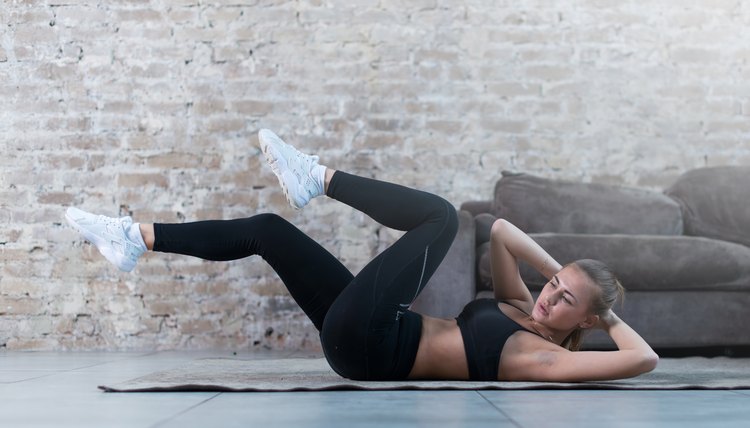Circuit Training Class Ideas

When you want an exercise routine that helps you hit your fitness goals and keeps you entertained, go for circuit training. By doing a series of exercises back to back, with limited breaks, you save time and don't have a lot of time to get bored.
Literally thousands of variations of circuit training are possible. Once you understand the fundamentals of circuit training, use your creativity and workout goals to develop your own class routine.
Circuit Training Fundamentals
If you know the basics of how to put together a circuit training class, you can then put your own spin on the workout. The foundation of a circuit training class includes planning the:
- Length of workout: Anywhere from 20 minutes to 45 minutes can offer an effective challenge;
- Number of stations: A circuit workout involves "stations" or exercises strung together. Usually anywhere from eight to 15 stations makes for an effective and comprehensive class;
- Time at each station and recoveries: Use the first two factors to determine the length of time you spend doing an exercise. Usually 30 to 60 seconds is plenty of effort, with 15 to 30 seconds between exercises to allow the class members to move to the next station. For example, for a 30-minute workout, offer 10 stations with 45 seconds of work and 15 seconds of rest. Repeat the circuit three times total to fill the time.
Circuit Class Ideas
The final step in developing the circuit training workout is to plan each station. Consider offering exercises of varying levels of difficulty and body part focus for a comprehensive, and challenging — yet doable — routine. Circuits can be all strength exercises, all cardio or a combination of both.
Themed Circuits
Themed circuits can be a fun way to keep a class motivated and interested. Themes may be serious or cheeky, but they're always effective.
Military Boot Camp: Make stations consist of exercises you'd experience in military boot camp, such as push-ups, pull-ups and burpees.
Around-the-World Circuit: Ask class members to do exercises named after different countries, such as Russian twists, Romanian deadlifts and French presses.
Olympic Circuit: Take exercises from several sports, for example boxing jabs, long jumps and soccer taps.

Body Part Focus
Emphasize a specific part of the body to make your circuit training distinct. This is a great way for people to work legs or core as a group, instead of independently out on the gym floor.
Leg Day Circuit: Include exercises that emphasize the butt, thighs and calves, such as back squats, deadlifts and jump lunges.
Upper-Body Circuit: Make this circuit blast your back, chest, arms and shoulders with rows, presses, lat raises, dips and curls.
Core Circuit: Go for stabilizing, twisting and crunching moves, such as bicycle crunches, stability ball planks, supermans and side bends.
References
Writer Bio
Andrea Cespedes is a professionally trained chef who has focused studies in nutrition. With more than 20 years of experience in the fitness industry, she coaches cycling and running and teaches Pilates and yoga. She is an American Council on Exercise-certified personal trainer, RYT-200 and has degrees from Princeton and Columbia University.
